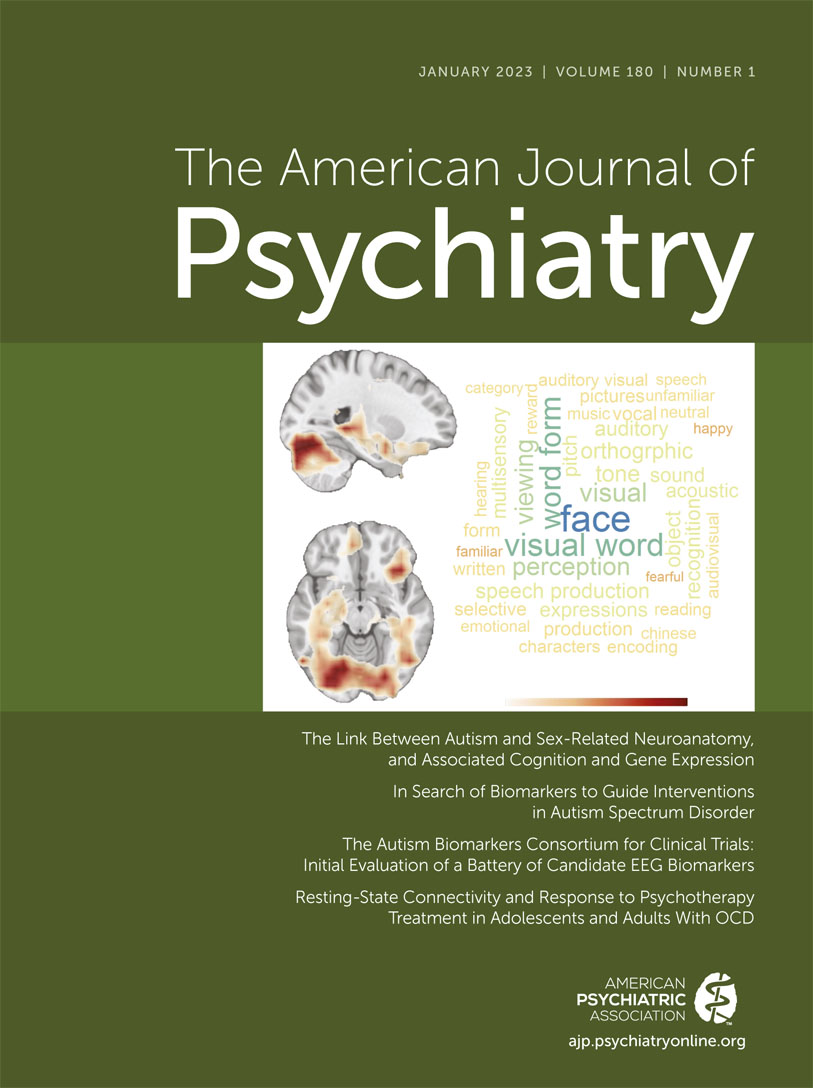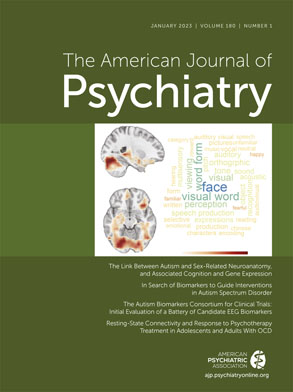Childhood- and Neurodevelopment-Related Psychiatric Disorders
Assessing the Validity of EEG Biomarkers for Use in ASD Research
Sex-Related Neuroanatomy Is Associated With ASD: Cognitive and Gene Expression Correlates
Rare Genetic Variants and Psychiatric-Related Neurodevelopment Disorders in a Large Health Care Population Sample
How Does the Polygenic Risk for ADHD Interact With Other ADHD Risk Factors?
Resting-State Connectivity Predictors of Treatment Response to Psychotherapy in Obsessive-Compulsive Disorder Patients
Conclusions
References
Information & Authors
Information
Published In
History
Keywords
Authors
Funding Information
Metrics & Citations
Metrics
Citations
Export Citations
If you have the appropriate software installed, you can download article citation data to the citation manager of your choice. Simply select your manager software from the list below and click Download.
For more information or tips please see 'Downloading to a citation manager' in the Help menu.
View Options
View options
PDF/EPUB
View PDF/EPUBLogin options
Already a subscriber? Access your subscription through your login credentials or your institution for full access to this article.
Personal login Institutional Login Open Athens loginNot a subscriber?
PsychiatryOnline subscription options offer access to the DSM-5-TR® library, books, journals, CME, and patient resources. This all-in-one virtual library provides psychiatrists and mental health professionals with key resources for diagnosis, treatment, research, and professional development.
Need more help? PsychiatryOnline Customer Service may be reached by emailing [email protected] or by calling 800-368-5777 (in the U.S.) or 703-907-7322 (outside the U.S.).

